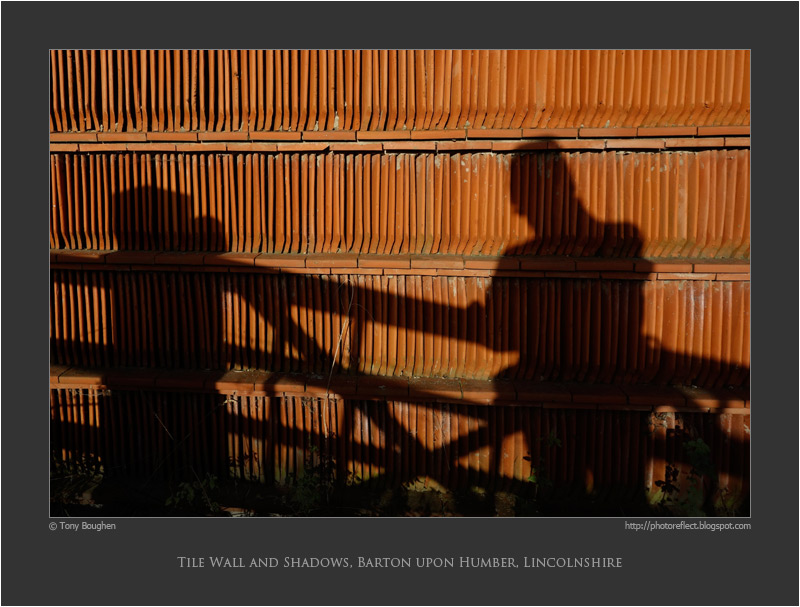click photo to enlarge
Along the southern bank of the River Humber, on each side of the Humber Bridge and adjacent to the town of Barton upon Humber, is a string of pools. Today many of them are nature reserves or are used for dinghy sailing. However, they almost all have their origins as clay pits dug for the raw material of tile and brick making. Today tiles are still made there. The company of William Blyth, established at Barton in 1840, continues to manufacture roof tiles - pantiles, plain tiles, French tiles, corrugated tiles and much more - using local clay and traditional methods.
A majority of the housing and farm buildings of the county of Lincolnshire are brick built with tile roofs. Companies such as William Blyth supply roof tiles for the renovation of old buildings and for new buildings that follow the traditional pattern. In the area immediately around the tile works damaged tiles and sometimes new ones are also used for the construction of perimeter walls and some constructional walls. For example, the works of the supplier mentioned has a pierced wall made of various kinds of pantile (see smaller photo), a cheap way of marking the boundary of the tilery. The wall in the main photograph is made plain tiles and is part of an ancillary building of "Water's Edge", a multi-purpose visitor and business centre of 2006 by the edge of the Humber. The designers (Gerard Bareham Architects) of this very modern looking building deliberately made use of the local roof tiles. More than that, they consciously followed the unusual practice of building and facing some of the structure's walls with them.
photograph and text © Tony Boughen
Photo 1
Camera: Sony RX100
Mode: Aperture Priority
Focal Length: 10.4mm (28mm - 35mm equiv.)
F No: f5
Shutter Speed: 1/800
ISO: 125
Exposure Compensation: -0.3 EV
Image Stabilisation: On

